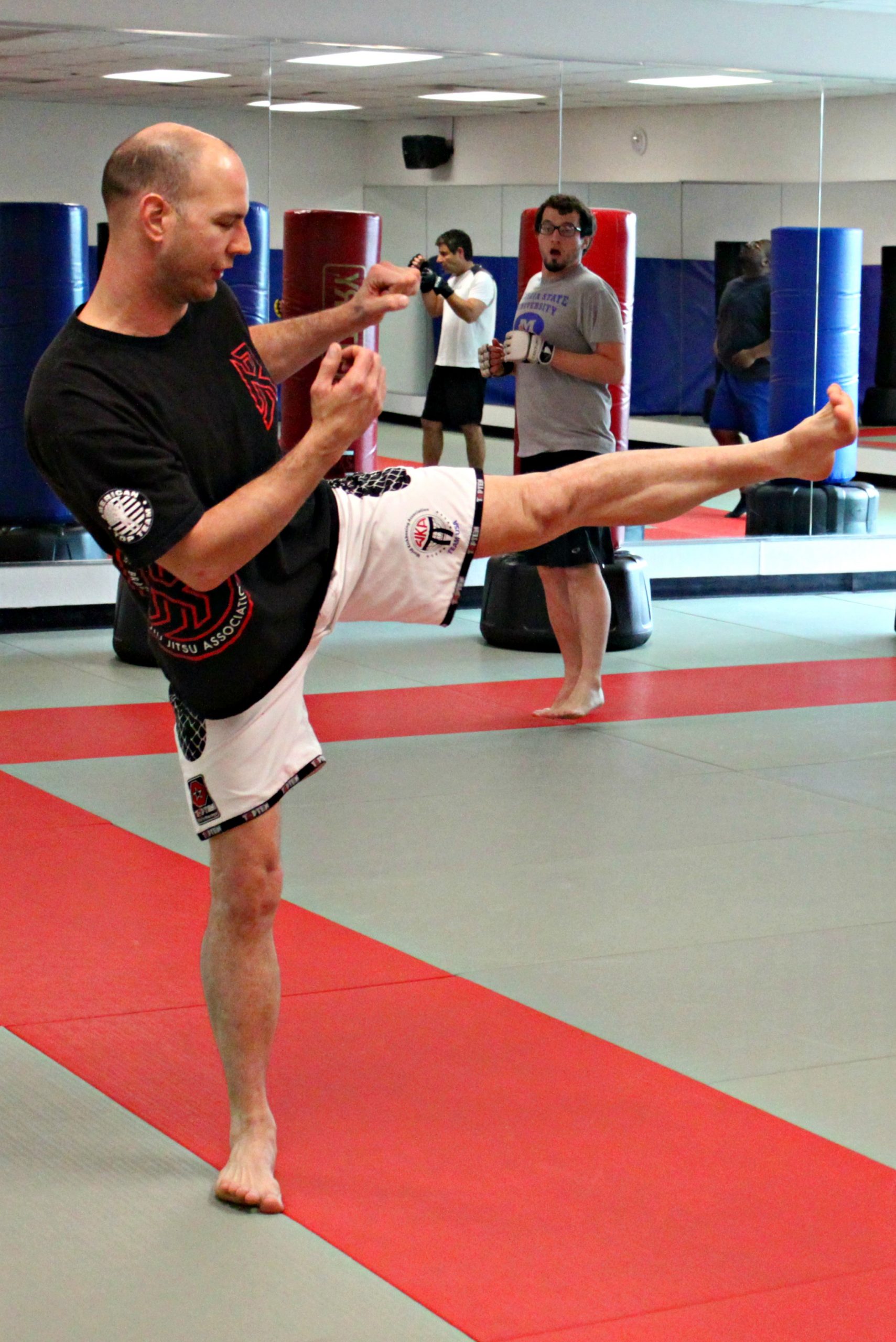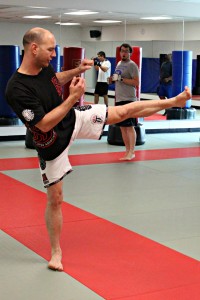
Eric Heegaard sits on the floor of the martial arts studio. He just finished a kickboxing class, but doesn’t look very tired. In fact, when it comes to this instructor and amateur fighter, stamina is the name of the game.
Heegard teaches three different classes at the Georgia State rec center: ab blast, kickboxing and mixed martial arts (MMA). He has competed in amateur and pro competitions abroad and won two silver medals for MMA.
“I was born in Detroit and had two older brothers, so fighting is just a part of life,” Heegard said. “I never chose to fight – I chose to win. I’ve always seen it as empowering, a form of self-defense and something to be proud of.”

Heegard takes a self-defense approach in the studio as well. Senior Melissa Landman, Georgia State English major, takes Heegaard’s kickboxing class at least once a week. She said the class is fun and upbeat, but is also a great way for her to let aggression out.
“I know he’s always said that he doesn’t want you to get into a fight,” Landman said. “He says in case you get into a fight, this is how you defend yourself. It’s always about defense and never about being aggressive and inciting fights.”
Heegard explained that there are differences between teaching classes like the one Landman attends and being a part of the fighting community. Learning lessons through both is how he builds his skills.
“Teaching is always fun. It’s a lot of fun,” Heegaard said. “Fighting is fun when you’re training, and after the fight. Before the fights, you’re emotionally wrecked. Most people wonder why they even do it to begin with. But it’s a rollercoaster. With teaching, you get to take all your mistakes and teach other people. It’s very rewarding. They’re both really rewarding, but I would say there’s not that chance of failure with teaching as much because you start off gradually and slow as you build up your comfort level.”
Heegaard started with the basics too, working his way up; that is the only way to fight correctly.
“I was a fighter first,” Heegard continued. “I used to fight on the streets, you know, being from Detroit. I got in a lot of fights in school. I used to fight before I was really ready to fight, or before I actually knew how to fight. I learned as I went. Most people learn a lot before they try. For our students, we learn the techniques, you learn how to defend against them, then you throw on full padding and you lightly spar, or try out your techniques with somebody. You don’t actually fight with someone until you’re ready to defend yourself.”
Heegaard is able to do just that, achieving medals and continuing to climb to the top. Eventually he wants to fight pro and own his own gym.
“Everybody asks me, ‘are you going to go pro’, ‘when are you going to go pro.’ And I said, when it’s easy for me to fight amateur then I’ll go pro,” Heegard said. “I want to get all my mistakes out now, and when I’m comfortable in the level that I’m at, I’ll go pro.”

As an trainer of aerobic kick-boxing and a wide range of application-oriented battling artistry, I have found that the best way to increase your health and fitness advantages without limiting your protecting abilities is to platform your exercises on self-defense moves